- News
- Reviews
- Bikes
- Components
- Bar tape & grips
- Bottom brackets
- Brake & gear cables
- Brake & STI levers
- Brake pads & spares
- Brakes
- Cassettes & freewheels
- Chains
- Chainsets & chainrings
- Derailleurs - front
- Derailleurs - rear
- Forks
- Gear levers & shifters
- Groupsets
- Handlebars & extensions
- Headsets
- Hubs
- Inner tubes
- Pedals
- Quick releases & skewers
- Saddles
- Seatposts
- Stems
- Wheels
- Tyres
- Tubeless valves
- Accessories
- Accessories - misc
- Computer mounts
- Bags
- Bar ends
- Bike bags & cases
- Bottle cages
- Bottles
- Cameras
- Car racks
- Child seats
- Computers
- Glasses
- GPS units
- Helmets
- Lights - front
- Lights - rear
- Lights - sets
- Locks
- Mirrors
- Mudguards
- Racks
- Pumps & CO2 inflators
- Puncture kits
- Reflectives
- Smart watches
- Stands and racks
- Trailers
- Clothing
- Health, fitness and nutrition
- Tools and workshop
- Miscellaneous
- Buyers Guides
- Features
- Forum
- Recommends
- Podcast
TECH NEWS
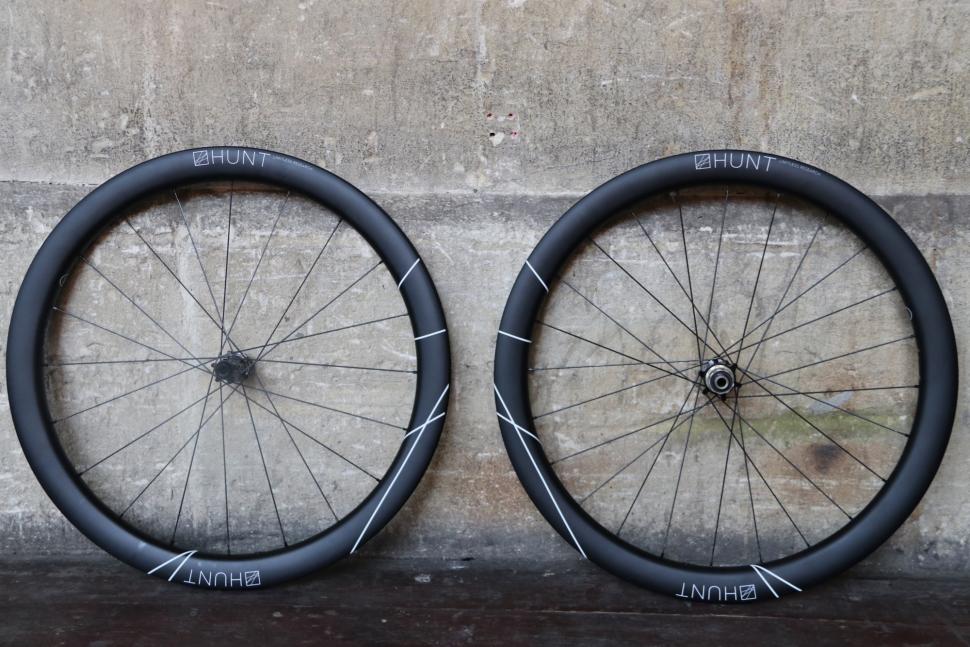 Hunt 48 Limitless Aero Disc wheels - 1
Hunt 48 Limitless Aero Disc wheels - 1Hunt reveals "world’s fastest road disc brake wheelset up to 50mm"
Hunt claims that its new 48 Limitless Aero Disc is faster than any other wheelset of its kind with either 25mm or 28mm tyres fitted.
We first told you about the Limitless wheels in January 2018, although they didn't have a name at that time. We decided to follow the creation of Hunt's new wheel from prototype through to completion. The aim was to develop a disc-specific aero wheel for 28mm tubeless tyres.
Why the focus on 28mm tubeless tyres?
“We’re starting from the standpoint that many of us want the increased grip, lower rolling resistance, greater puncture protection, lower pressures and improved ride quality that you can get with wider tubeless tyres," said Hunt's Tom Marchment at the time.
The Limitless project has been led by Engineering and Product Manager Luisa Grappone who, with lots of experience in designing aero bike wheels, was convinced that the key was to go with a wide rim with a bigger radius at the spoke side. Although rim brake wheels have a brake track width that's limited by the rim brake calliper, disc brake wheels have no such restriction, allowing far broader profiles to be used.
A whole lot of wind tunnel testing and interpretation of the results helped Hunt develop its ideal shape, which you can read about here.
The final rim profile is 48mm deep with a very wide profile, bulging outwards from the tyre interface to a maximum of 34.3mm. Bear in mind that the stocky Zipp 303 NSW has a maximum width of 26.5mm and Zipp 404s are 27mm at the widest point, so the Hunts are over 25% wider than either of those.
"[Having a rim that's wider than the tyre] creates the most effective overall aerofoil shape (when considering the wheel and tyre together) and reduces turbulence as airflow transitions into the spoke bed," says Hunt. "It is now obvious that disc-brake road rims need to be significantly wider to be at their best aerodynamically."
Despite the wish for a very wide external rim width for aero efficiency, Hunt wanted a a 22.5mm internal width so as not to lose compatibility with 23mm and 25mm tyres from leading brands. In order to fulfil those two requirements, the sidewalls of the rim would need to be thicker than usual.
"With a 22.5mm internal width you're usually looking at a maximum external width of no more than 27mm," says Tom Marchment. "We wanted to go much wider than that so we needed to fill the gap."
One option would be simply to add more carbon fibre but that would be relatively heavy so Hunt came up with a new idea. First, the basic structure of the rim is formed from unidirectional carbon fibre in a mould in the normal way, but a small step is left towards the top of the sidewall (which you can see in the picture above).
Then the rim goes into a second mould and a low density polymer is injected to fill in this step. This polymer adds a little structural integrity to the rim but it's essentially there to take up the space, so it's crucial from an aerodynamics perspective.
"We could have used carbon-fibre throughout, but carbon weighs around 1.6g/cm3. The low density polymer is 0.7g/cm3, saving around 50g per rim."
Adding this second moulding process pushes the price up a little, but Hunt thinks that it's worth it in order to keep the weight down. The Limitless 48 wheelset has a total claimed weight of 1,582g.
Hunt now hold patents for the process of adding a low density polymer to the outside of a carbon-fibre rim.
Hunt has taken the finished version (as opposed to prototypes) of the 48 Limitless Aero Disc back to the wind tunnel and is pleased with the results, saying that the wheels perform better than their rivals with 28mm tyres fitted. Hunt also says that despite being optimised for use with 28mm Schwalbe Pro One tyres, the aerodynamic performance is equally impressively with 25mm tyres fitted (we've included a chart of Hunt's wind tunnel data below, the red line representing the 48 Limitless Aero Disc wheel). You can run tyres up to 45mm wide if you like.
Hunt tested its wheels against the DT Swiss ARC 1450, the DT Swiss ERC 1100 Dicut 48, the Zipp 303 NSW, and the Mavic Cosmic Pro Carbon UST.
If you want more details on the research Hunt uses to support its claims, including full technical details of its wind tunnel testing methodology, a white paper should be available at www.huntbikewheels.com by the time you read this.
Hunt says that its testing showed the Enve SES 4.5 AR Disc wheels are more aerodynamically efficient than the 48 Limitless Aero Disc wheels at certain angles, but although the front Enve wheel is 49mm deep, the rear is 55mm so it has a distinct advantage. Plus, Hunt points out, Enve says that some tyres are incompatible/not recommended for use with the SES 4.5 AR Disc wheels, and this list includes Continental's popular new Grand Prix 5000 TL.
Take a look at our review of the Continental Grand Prix 5000 TL
The 48 Limitless Aero Disc wheels use hubs that feature CeramicSpeed bearings designed to reduce rolling resistance and a freehub that engages in 7.5° when you start to pedal. The Pillar Wing 20 spokes have an aerofoil profile and external nipples for easy adjustment.
Find out about the pros and cons of ceramic bearings
The rider weight limit is 100kg and Hunt says that its testing over the Arenberg cobbles in northern France had no ill effects.
Read Hunt's detailed white paper covering the 48 Limitless Aero Disc wheelset
The other advantage that Hunt is keen to emphasise is the price. The 48 Limitless Aero Disc wheelset is priced £1,289 while a Mavic Cosmic Pro Carbon SL UST Disc wheelset is £1,800, DT Swiss ERC Dicut disc brake wheels are £870 (f) and £1,200 (r), Zipp 303 NSW Tubeless disc brake wheels are £1,160 (f) and £1,518 (r), and an Enve SES 4.5 AR Disc wheelset is £2,700.
What next? Hunt says that it is extending the Limitless technology to rims of other depths: 52mm, 62mm and 82mm. You'll be able to buy wheelsets in various front and rear rim depth combos. These are all several months away.
For more details go to www.huntbikewheels.com.
Mat has been in cycling media since 1996, on titles including BikeRadar, Total Bike, Total Mountain Bike, What Mountain Bike and Mountain Biking UK, and he has been editor of 220 Triathlon and Cycling Plus. Mat has been road.cc technical editor for over a decade, testing bikes, fettling the latest kit, and trying out the most up-to-the-minute clothing. He has won his category in Ironman UK 70.3 and finished on the podium in both marathons he has run. Mat is a Cambridge graduate who did a post-grad in magazine journalism, and he is a winner of the Cycling Media Award for Specialist Online Writer. Now over 50, he's riding road and gravel bikes most days for fun and fitness rather than training for competitions.
Latest Comments
- David9694 15 min 43 sec ago
Great to see redruthboy28 and jonnybar5705 getting the credit they deserve for their contributions to journalism:...
- Rendel Harris 30 min 41 sec ago
I tell you what, I'll take a leaf out of your book, I'll just make up a figure (for example, off the top of my head, that 40% of the population of...
- ktache 1 hour 10 min ago
Caught the last few days, hadn't realised they were showing it to start, shame....
- chrisonabike 1 hour 26 min ago
That's a bit like refusing to get a sofa because you've got cats or dogs "because then every other inch of the house becomes explicitly for animals...
- dubwise 1 hour 55 min ago
The good old uci at it again. del Torro fined for bringing the sport into disrepute because of a broken zip on his skinsuit. Beggars belief.
- leedorney 2 hours 7 min ago
Scotland's a beautiful place with beautiful people! - done hol there recently and the roads are fantastic, cool tho 👍
- Mr Anderson 2 hours 18 min ago
I decided to delete my posting immediatley after it was made....
- Jvtrigo 2 hours 41 min ago
Just got my set, the actual weight for rim brakes are 692g front wheel and 860g rear wheel. So a total of 1,552g (with rim tape, and no valve).
- OnYerBike 2 hours 49 min ago
Obviously it's a good thing that manufacturers are trying to phase out PFAS and other damaging chemicals. That said, the reason that Shakedry "set...
- eatmorefruit 3 hours 22 min ago
Unfortunately I too had problems with the Techalogic camera - worked well for a week then started to turn itself off despite being fully charged....
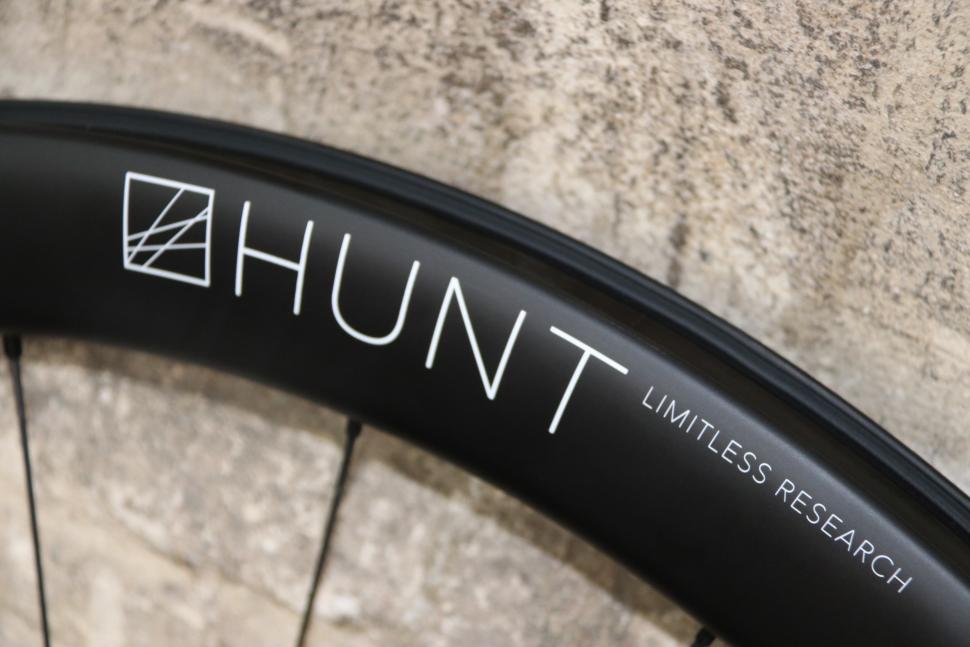
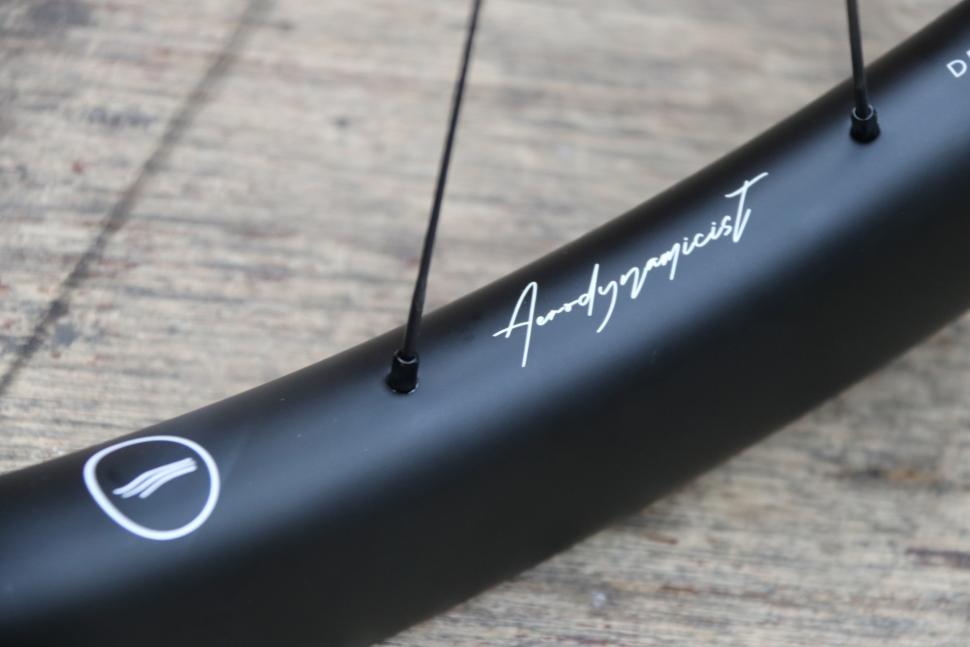
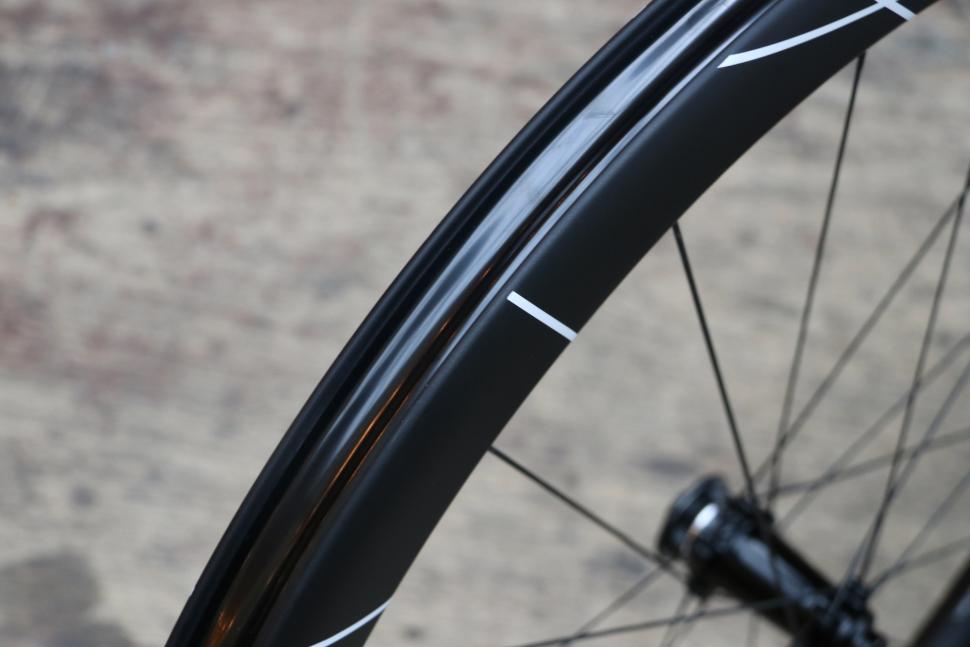
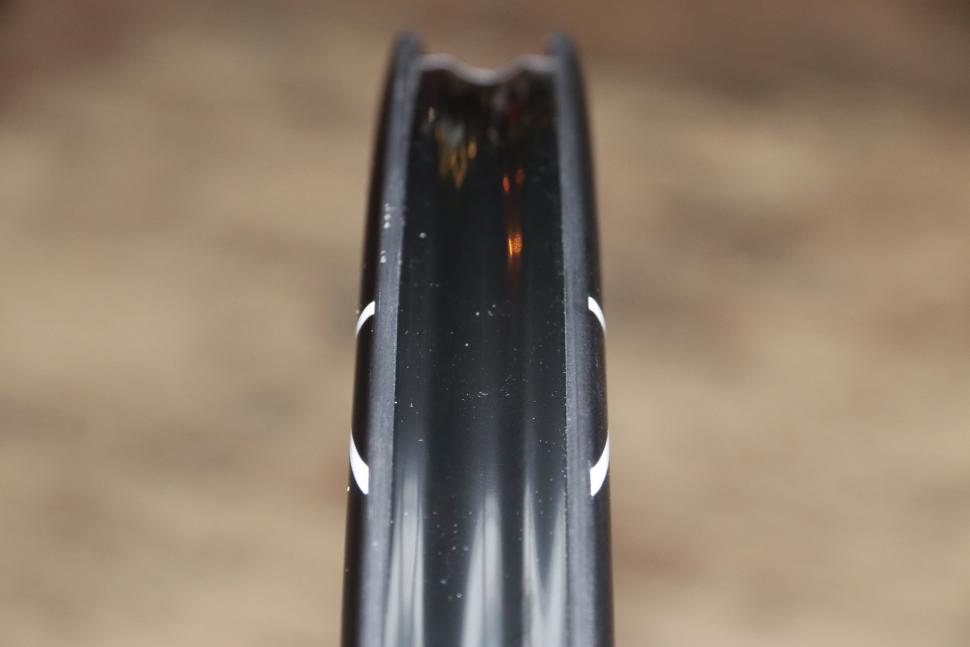
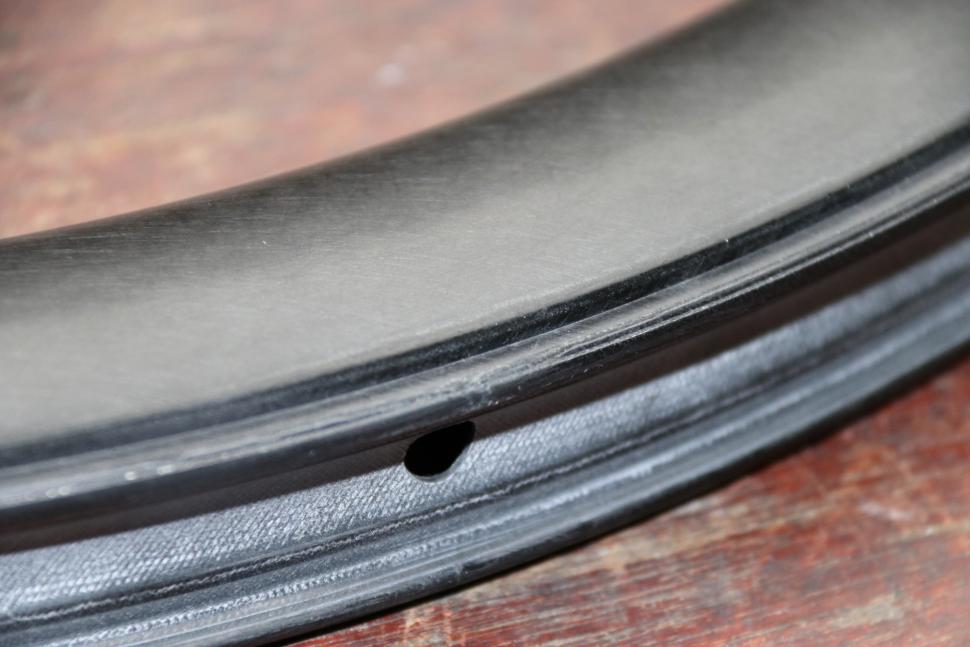
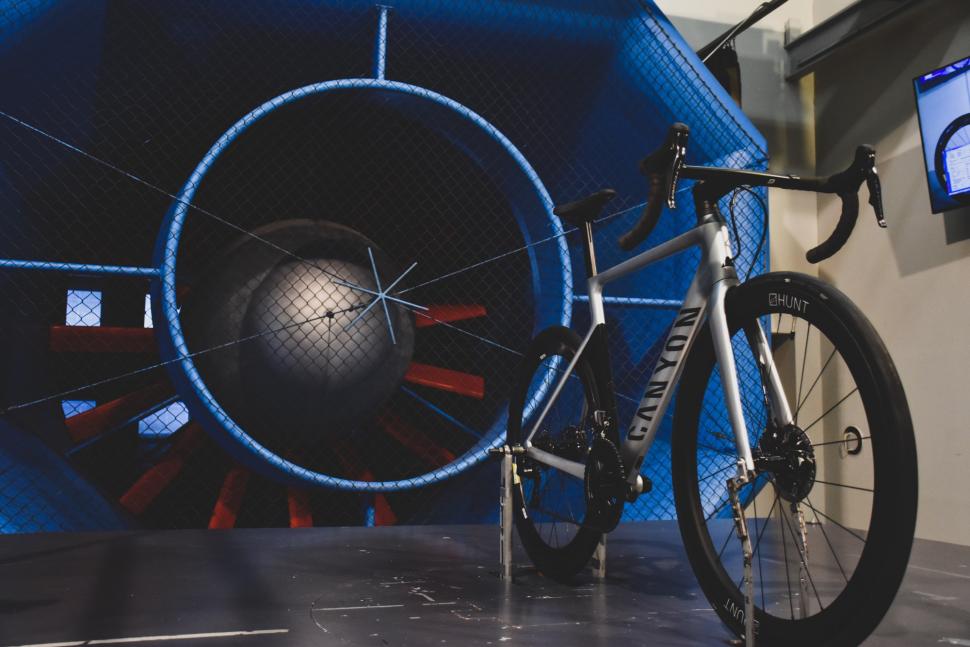
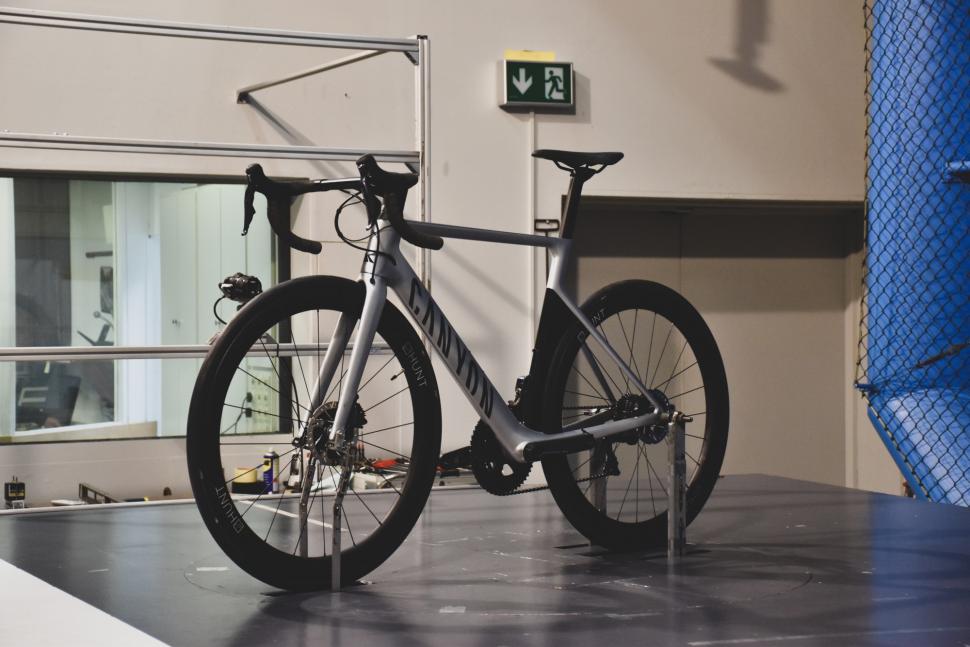
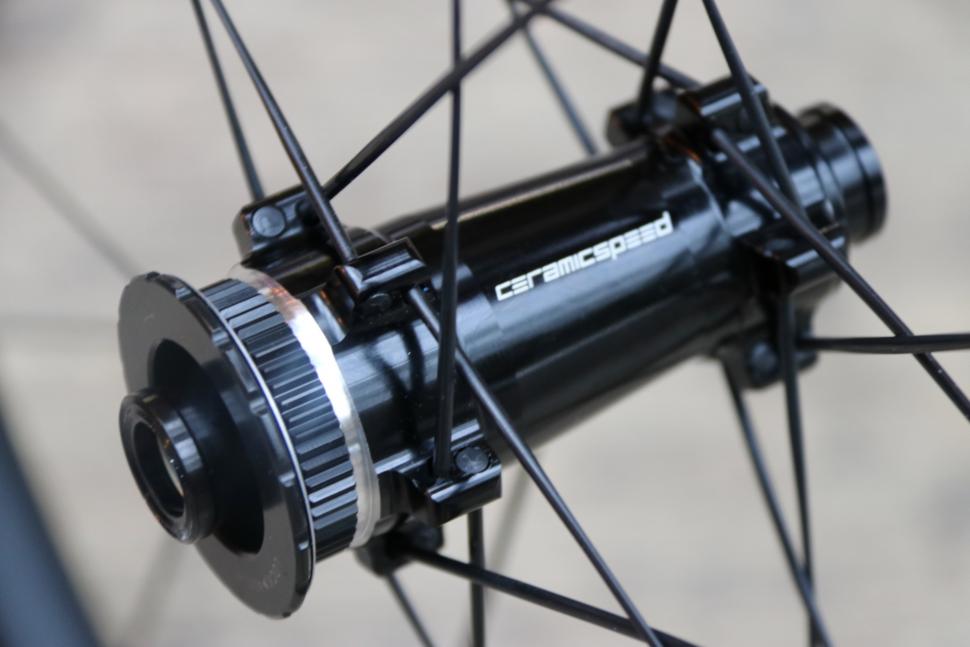

Add new comment
5 comments
Surprised not to see SwissSide noted as competitors... I thought they were right up there in the Aero research stakes, and are closer in price.
Hi PRSBoy,
we tested several DT Swiss models instead and it is well known they have been designed and developed together with Swiss Side.
Pleasantly surprised at the price of those, as I was getting further down the article I was starting to think they were going to be about £1,800-£2,000 so that was good to see.
They're probably far more wheel than I'd ever need, but really good to see the level of effort and creative thinking that's gone into these.
It's nice to see at least one wheel company pushing past the rim brake restrictions many others still seem to be staying at least vaguely within when it comes to rim design. I was saying to riding buddies years ago that discs wheels will become faster than rim brake wheels once designers open their mind a bit and start playing with the fact they no longer need a brake track and the shape/width normally assocated with it.
I know plenty of companies now offer deep rims without a brake track, but their width and shape is often still within traditional caliper rim brake limits.
Absolutely second that comment. Removing the need for a brake track and dealing with the subsequent heat dissipation at the rim, means that the structural duties can be optimised for rigidity, strength and aerodynamics with weight saving as an added benefit.
Could even go one better and create a version for tubulars, removing the weight of material required to create a strong bead to seat a tubeless tyre.
Now that disc brake setups have been shown to suffer no aero disadvantage compared with rim brakes, or indeed perform slightly superior in this regard and are getting ever better as manufacturers become more accomplished at creating disc brake specific frame geometries, the case for utilising them on road bikes is compelling. The only real remaining objections are that some people just do not like the way they look or they just prefer the familiar characteristics of a rim brake which is fair enough when out and out performance is not an issue.
https://www.slowtwitch.com/Tech/Disc_and_Rim_Brake_Aero_Drag_6073.html